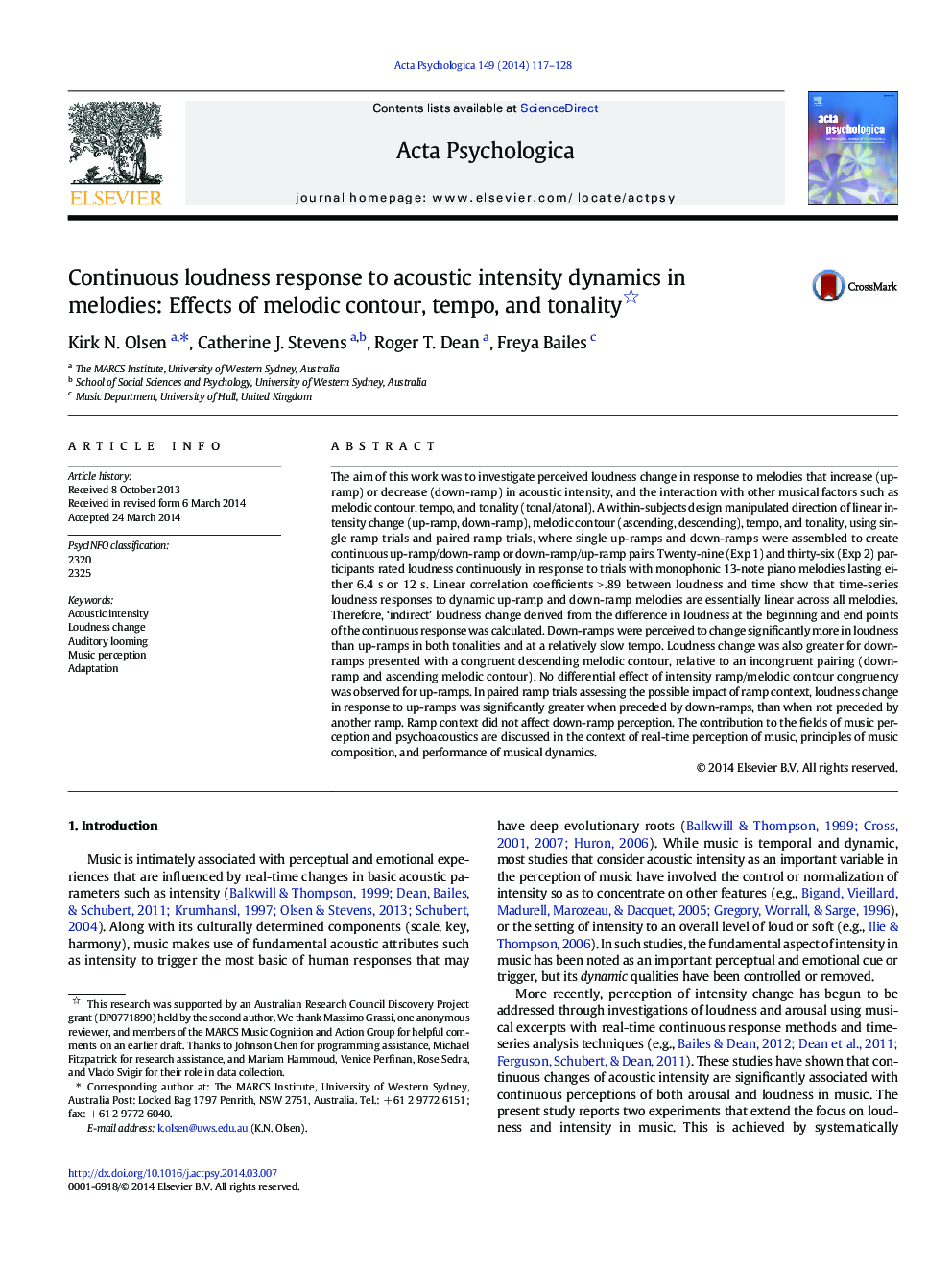| Article ID | Journal | Published Year | Pages | File Type |
|---|---|---|---|---|
| 7277700 | Acta Psychologica | 2014 | 12 Pages |
Abstract
The aim of this work was to investigate perceived loudness change in response to melodies that increase (up-ramp) or decrease (down-ramp) in acoustic intensity, and the interaction with other musical factors such as melodic contour, tempo, and tonality (tonal/atonal). A within-subjects design manipulated direction of linear intensity change (up-ramp, down-ramp), melodic contour (ascending, descending), tempo, and tonality, using single ramp trials and paired ramp trials, where single up-ramps and down-ramps were assembled to create continuous up-ramp/down-ramp or down-ramp/up-ramp pairs. Twenty-nine (Exp 1) and thirty-six (Exp 2) participants rated loudness continuously in response to trials with monophonic 13-note piano melodies lasting either 6.4Â s or 12Â s. Linear correlation coefficients >Â .89 between loudness and time show that time-series loudness responses to dynamic up-ramp and down-ramp melodies are essentially linear across all melodies. Therefore, 'indirect' loudness change derived from the difference in loudness at the beginning and end points of the continuous response was calculated. Down-ramps were perceived to change significantly more in loudness than up-ramps in both tonalities and at a relatively slow tempo. Loudness change was also greater for down-ramps presented with a congruent descending melodic contour, relative to an incongruent pairing (down-ramp and ascending melodic contour). No differential effect of intensity ramp/melodic contour congruency was observed for up-ramps. In paired ramp trials assessing the possible impact of ramp context, loudness change in response to up-ramps was significantly greater when preceded by down-ramps, than when not preceded by another ramp. Ramp context did not affect down-ramp perception. The contribution to the fields of music perception and psychoacoustics are discussed in the context of real-time perception of music, principles of music composition, and performance of musical dynamics.
Related Topics
Life Sciences
Neuroscience
Cognitive Neuroscience
Authors
Kirk N. Olsen, Catherine J. Stevens, Roger T. Dean, Freya Bailes,
